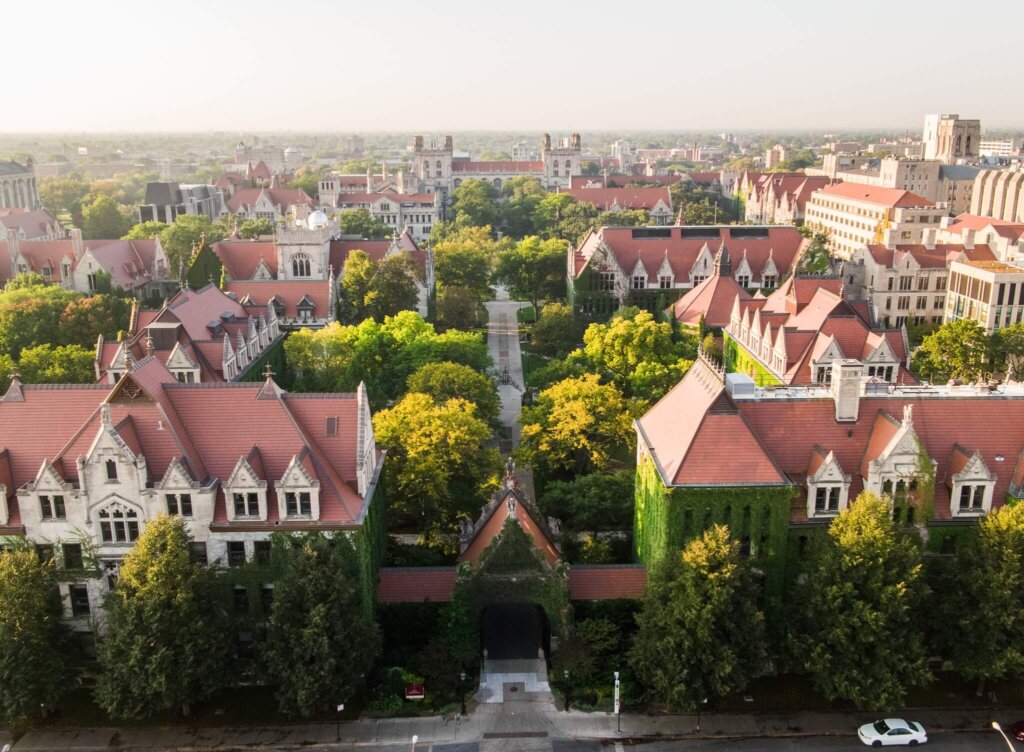Guide to US Applications • Undergraduate
6 Things You Should Know About Studying in the US
POSTED ON 11/15/2022 BY The Red Pen

Leaving your home and choosing to study in the US is a big decision, especially if you are doing it for the first time. While doing your research, many questions will arise. What is the education system? How will you make friends? What cultural differences can you expect? Don’t worry. We have you covered.
Here’s a list of things you need to know before applying to colleges in the US:
1) The education system:
The higher education system in the US is different from the rest of the world. A typical US bachelor’s degree takes four years to complete.
There are two ways to enter the higher education system:
a. A two-year community college or junior college, after which you can transfer to a four-year college or university
b. A four-year college or university
Most international students opt for the latter unless they can’t afford the four-year college fee or have low test scores.
All US colleges follow a credit system. Simply put, it is a way to measure curriculum completion requirements. A credit or a credit hour is the basic unit of measuring classes or courses. The cumulative total of these credits then counts towards receiving your degree. For most bachelor’s degrees, you need to earn a total of 120-130 credits. However, some colleges, such as Carnegie Mellon University, may have their own total credit requirements.
The credit load is usually divided into three parts:
a. Mandatory courses and electives required for your major
b. Courses outside your major, but a part of the general core curriculum
c. Elective courses not related to your major but for personal interest
You can earn between two to four credits per class, depending on the number of instruction hours per week. If you select your courses well, you will accumulate 30-32 credits at the end of each year, leading to 120-130 at the end of four years.
Generally, the first semester of a bachelor’s degree is concentrated on the general education requirements that you must complete, even if you have declared your major. Often, these subjects have little or nothing to do with your final major. For instance, while you may want to major in computer science, you will find yourself taking courses in humanities, arts and social sciences, as is the case at MIT. This is to ensure that you have a holistic education experience. US colleges are also highly flexible when it comes to majors. You usually have til the sophomore year (second year) to declare your major.
2) The finances:
US universities have some of the tuition fees worldwide. Apart from the tuition fee, there are other living expenses such as accommodation, transportation, food, supplies and entertainment. Books and school supplies can sometimes surpass USD 1,000 a year. Universities also expect you to have health insurance, which is expensive. The cost of living usually varies according to the city you choose. For example, living in New York City or Chicago is invariably more expensive than living in college towns such as Springfield or Toledo. As a rule, living on campus is more expensive. But to rent off-campus, you need a local guardian. You may be able to sublet from a native student studying outside the US, but this is usually rare.
Average fees at US universities for 2022-2023:
| Public two-year colleges | Public four-year colleges (in-state fees) | Public four-year colleges (out-of-state fees) | Private non-profit four-year colleges | |
|---|---|---|---|---|
| Tuition and other fees | $3,860 | $10,940 | $28,240 | $39,400 |
| Room and board | $9,610 | $12,310 | $12,310 | $14,030 |
| Total (per year) | $13,470 | $23,250 | $40,550 | $53,430 |
Source: College Board
To offset your overall cost, you can apply for a scholarship, take up small on-campus jobs according to your visa rules, make the most of student discounts, buy used textbooks and pack smart before you leave.
3) Culture and diversity:
The most appealing part about the US culture is its global diversity. On campus, you will meet students from different countries, religions, races, socio-economic backgrounds, sexual orientations, gender roles, physical abilities and more. This diversity is known to result in positive learning outcomes, according to the Century Foundation. Speaking about diversity, Monica Inzer, Vice President for Enrolment Management at Hamilton College, says, “…learning is elevated to a different level because [students] can appreciate and understand and hear from someone from a different background, which may change their thinking.”
The US also has strong LGBTQ+ and anti-racism communities. Be careful of using offensive racial slurs and derogatory slang, even in jest. It might be helpful to read up on what counts as an offense. Should you be at the receiving end of discrimination, know that you will find plenty of support. You can report the incident to the respective anti-racism committee, if there is one, of your college.
When it comes to food, the US caters to all dietary restrictions. However, vegetarians, vegans, Jains, people who refrain from eating certain meats and people with food allergies should carefully read the ingredients or ask a server. Culturally, in the US, it is customary for you to order your own dish; many people are not accustomed to sharing their food with others or what they call “eating family-style.”
In the US, people value their time, so being “fashionably late” for anything is unacceptable. You must also avoid standing too close to someone or touching them without permission.
Lastly, US culture embraces differences and celebrates the individual. So hold on to your individuality and let your inner personality shine.
4) Individual independence:
In the US, children are raised to be independent from a young age. At the age of 18, they move out of their family homes and work full-time or part-time to pay their tuition fees or to simply survive. They are capable of making their own decisions and they do expect others to do so as well. This independence is reflected in the US college system as well. Colleges encourage students to design their own class schedules. So, if you create a four-hour class schedule, you are expected to use the remaining day by engaging in something meaningful. In fact, colleges offer plenty of options through clubs and student organisations and even community service initiatives.
Another point to remember is that labour is expensive in the US. Most of your classmates have already been accustomed to cooking and cleaning up after themselves without relying on anyone. To better fit in, it might be prudent to learn how to look after yourself. Do not brag about your domestic help in India; you will come across as spoilt and over-indulged.
5) Greek-Letter Organisations (GLOs) and communities:
If you have grown up watching young adult Hollywood movies, you will likely be familiar with the fact that fraternities and sororities are prevalent in US colleges. Commonly referred to as Greek-Letter Organisations, these social organisations are brotherhoods and sisterhoods, for which membership is obtained as an undergraduate student and then continues for life. New member selection is done in a two-part process known as rushing and pledging. These organisations engage in philanthropic activities, host parties, offer a community living space and provide networking opportunities. GLOs require a fair amount of time commitment, which could impact your study and sleep hours. Besides GLOs, there are a host of other communities and clubs that offer extracurricular activities. Most US campuses have several clubs ranging across different sports. Other communities include academic clubs, political clubs, media and publication groups, theatre and arts clubs, community service and social justice groups and cultural clubs, among others.
6) College orientation:
Stepping onto a college campus for the first time can be overwhelming, especially with numerous buildings to navigate and new faces to meet. To ease the adjustment, colleges offer student orientation, which can last anywhere from one day to a week. Across numerous sessions, orientation leaders answer questions, take you on campus tours and dispense essential information on campus safety, technology, academic resources, support groups and communities. Most colleges’ orientation happens throughout the summer, usually right before your college term starts in the fall. You need to pick a suitable date and register for them online. It is recommended not to skip orientation, as it will save considerable adjustment time.
Now that you know the basics of studying in the US, you are ready to start the application process. To know more about how to socialise as an international student, read this blog post. If you require some more assistance, get in touch with us.





